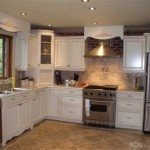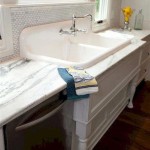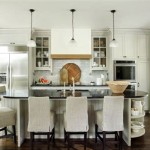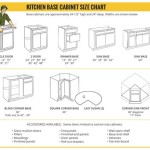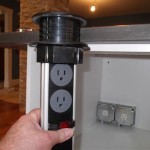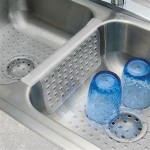What Size Hardware for Kitchen Cabinets? A Comprehensive Guide
Selecting the correct size hardware for kitchen cabinets is a crucial aspect of both functionality and aesthetics. Cabinets, whether newly installed or undergoing renovation, benefit significantly from appropriately sized pulls, knobs, and hinges. Incorrect sizing can lead to operational difficulties, visual imbalance, and even physical damage to the cabinet doors and drawers over time. This article provides a detailed examination of the factors influencing hardware size selection, focusing on specific types of hardware and offering guidelines for achieving optimal results.
Understanding the Impact of Cabinet Size and Style
The dimensions of the cabinets themselves play a primary role in determining the appropriate hardware size. Smaller, narrower cabinets require correspondingly smaller knobs and pulls to maintain visual harmony. Conversely, larger, wider cabinets benefit from larger hardware that provides a sense of proportion and offers a more substantial grip. Style also matters. Modern, minimalist designs often favor sleek, understated hardware, while traditional or ornate cabinetry may call for more elaborate and substantial pieces.
For instance, consider a typical upper cabinet, often measuring 12 inches or less in width. A large, ornate pull spanning several inches would likely appear disproportionate and overwhelming on such a small cabinet. A smaller knob or a minimalist pull of around 3 inches would be a more suitable choice. Conversely, a wide drawer of 30 inches or more would benefit from a larger pull, usually spanning at least one-third of the drawer's width, to provide adequate leverage and visual balance.
The depth of the cabinet, while less critical than width, can also influence the selection of knob or pull projection. A very shallow cabinet might benefit from hardware with a minimal projection to avoid obstructing movement in the kitchen, while deeper cabinets can accommodate hardware with a more substantial projection without issue.
The overall style of the kitchen also plays a significant role. A modern kitchen with clean lines and a minimalist aesthetic typically calls for simple, unadorned hardware. In contrast, a traditional or farmhouse-style kitchen might benefit from more ornate hardware with decorative details, such as antique brass or wrought iron finishes. The choice of hardware should complement the overall design scheme and enhance the kitchen's intended character.
Guidelines for Choosing Knob and Pull Sizes
When selecting knobs, a general rule is to choose a knob size that feels comfortable in the hand and is visually proportional to the cabinet. Knobs typically range in size from 1 inch to 1.5 inches in diameter. For smaller cabinets and drawers, a 1-inch knob is usually sufficient. Larger cabinets and drawers can accommodate knobs up to 1.5 inches in diameter.
Pulls, on the other hand, offer more flexibility in terms of size. A common approach is to choose a pull that is approximately one-third the width of the drawer or door. For example, a 12-inch wide drawer would ideally have a pull that is around 4 inches long. This provides a comfortable grip and ensures visual balance.
However, this "one-third" rule is not absolute. For larger drawers, such as those exceeding 30 inches in width, a pull that is half the drawer's width may be more appropriate. This provides a more substantial grip and enhances the overall aesthetic. Conversely, for very small drawers, a pull that is slightly shorter than one-third the drawer's width may be preferred to avoid overwhelming the drawer.
Another factor to consider is the center-to-center measurement of pulls. This refers to the distance between the screw holes on the pull. Common center-to-center measurements include 3 inches, 4 inches, 5 inches, and 6 inches. When replacing existing hardware, it is essential to match the existing center-to-center measurement to avoid having to drill new holes in the cabinets.
The projection of the pull, or how far it extends from the cabinet surface, is another important consideration. A pull with a sufficient projection provides a comfortable grip and allows for easy opening of the drawer or door. However, a pull with excessive projection can be cumbersome and may pose a safety hazard. The ideal projection will depend on the user's preferences and the specific characteristics of the cabinets.
Considerations for Hinges and Other Hardware
While knobs and pulls are the most visible aspects of cabinet hardware, hinges play an equally important role in ensuring the proper function of the cabinets. Hinges are responsible for allowing the doors to swing open and closed smoothly and securely. Selecting the correct size and type of hinge is crucial for preventing door sag, misalignment, and other operational problems.
Hinge size is generally determined by the weight and thickness of the cabinet door. Heavier, thicker doors require larger, more robust hinges to support their weight. Smaller, lighter doors can use smaller, less substantial hinges. The hinge manufacturer's specifications typically provide guidance on the appropriate hinge size for different door weights and thicknesses.
There are various types of hinges available, including concealed hinges, surface-mounted hinges, and self-closing hinges. Concealed hinges are hidden from view when the door is closed, providing a clean and modern look. Surface-mounted hinges are visible on the outside of the cabinet and can add a decorative element to the design. Self-closing hinges automatically close the door when it is within a certain distance of the cabinet frame, preventing the door from being left ajar.
Beyond hinges, other hardware components, such as drawer slides and shelf supports, also require careful consideration. Drawer slides should be selected based on the weight capacity of the drawer and the desired level of smoothness and quietness. Shelf supports should be chosen based on the weight capacity of the shelf and the desired level of adjustability. Using undersized or inadequate hardware can lead to premature wear and tear, as well as potential safety hazards.
When selecting any type of cabinet hardware, it is essential to consider the material and finish. Common materials include brass, stainless steel, bronze, and zinc. Each material has its own unique properties in terms of durability, corrosion resistance, and aesthetic appeal. The finish should complement the overall design scheme of the kitchen and be resistant to scratching and tarnishing. Popular finishes include polished chrome, brushed nickel, oil-rubbed bronze, and matte black.
Installation is another critical aspect of ensuring proper cabinet hardware function. Properly installed hardware will operate smoothly and reliably for years to come. Improperly installed hardware, on the other hand, can cause damage to the cabinets and may require frequent repairs. It is often recommended to hire a professional installer to ensure that the hardware is installed correctly.
Ultimately, the selection of cabinet hardware size is a matter of balance and proportion. The hardware should be large enough to provide a comfortable grip and be visually appealing, but not so large that it overwhelms the cabinet. By considering the size and style of the cabinets, the function of the hardware, and the overall design scheme of the kitchen, one can choose the appropriate hardware size to enhance both the beauty and functionality of their kitchen cabinets.

Hardware Guide

How To Choose Hardware Pull Size For Your Cabinets

Hardware Guide

The Right Length Cabinet Pulls For Doors And Drawers Kitchen Hardware
Cabinet Hardware Sizing Guide The Knobbery Door Bath Accessories Faucets Furniture Knobs And Pulls

The Right Length Cabinet Pulls For Doors And Drawers Kitchen Hardware
How To Choose The Best Size Pulls For Your Cabinets Trubuild Construction

Where To Put Knobs And Handles On Kitchen Cabinets Pa

Cabinet Hardware One Vs Two Pulls Kitchen Design Concepts
How To Choose The Best Size Pulls For Your Cabinets Trubuild Construction
Related Posts

